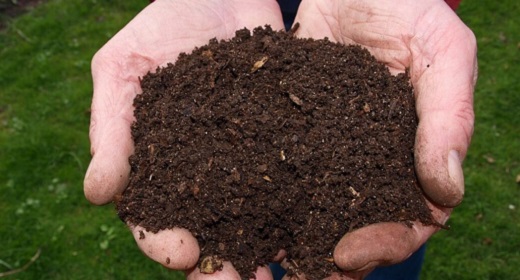by Caitlin Yoshiko Kandil: Germaine Omish-Lucero’s ancestors were taken from their homes and forced to build California’s Mission San Luis Rey de Francia—a mission in what is now Oceanside, California—about 200 years ago…
There, they were exposed to diseases such as measles, to which they had no immunity.
Thousands died—and there is no escaping this tragic piece of California history.
Yet Omish-Lucero, her children, and the children in her tribe stand. Despite inequities that continue to this day, the Rincon Band of Luiseno Indians, to which she belongs, has endured.
As a new tragedy—the coronavirus pandemic—grips the globe, what can we learn from indigenous leaders like Omish-Lucero about resilience?
“Every day it’s a battle,” says Omish-Lucero, who serves on the advisory boards of the Strong Hearted Native Women’s Coalition and the California Health Report. “It’s not something that is history. It’s not something that is in the past. It’s current events. This happens every single day.”
Omish-Lucero explains that for tribal people the fight is continuous. “We’ve been fighting it since contact (with colonialists), and we’ll continue with it, and our babies and grandbabies and great-grandbabies will continue the fight.
“And that is part of the resiliency.”
Practice Collectivism
Arcenio Lopez, executive director of the Mixteco/Indigena Community Organizing Project in Ventura County, says the indigenous ethic of collective living can be instructive during the pandemic. This means rejecting selfishness, individualism, and caring only for oneself.
“People in this culture say, ‘my family,’ and they’re only thinking about their parents and their children,” says Lopez. “But for us, ‘our family’ is anyone who is part of our communities.”
Sarai Ramos, a community worker for the Binational Center for the Development of the Oaxacan Indigenous Communities, a social services organization in the Central Valley, agrees.
“When we talk about indigenous models, it’s a symbiotic relationship where people learn from each other and share resources, versus the profit motive,” Ramos says.
This means sharing food and other necessities — instead of hoarding — and checking in on others to make sure they have what they need.
“We are known for being a resilient people,” Ramos says. “We’ve found ways that we’re all moving forward with each other as a community.”
Stay Connected
Staying connected to family and community has long been a source of indigenous resilience, explains Daniel Dickerson, an associate research psychiatrist with UCLA’s Integrated Substance Abuse Programs who is Inupiaq, which means a member of northern Alaska’s native people. Repeated forced relocations have taught native peoples the dangers of disconnection, he says.
Now, when many people are physically separated from their families, friends and communities, Dickerson says it’s important to find new ways to stay in touch by phone or social media.
“This communal approach is what sustains people,” he continues. “And the opposite — being isolated or feeling left out, not being connected with your community or ethnic or racial support groups — leads more towards feeling disconnected, isolated and being more prone toward depression and substance abuse.”
Protect the Vulnerable
A key practice for many indigenous communities, according to Lopez, is to care for its most vulnerable members, particularly the elderly.
“The elders are very important for our families,” he says. “They’re the people we learn from and where we get our wisdom.”
Since older people are especially susceptible to the coronavirus, the pandemic offers the chance to live out these values, whether it’s calling parents, grandparents, and neighbors on the phone; getting groceries for them; or making sure they have all the supplies they need, Lopez says.
“Right now it’s an opportunity to bring this way of living (with respect for our elders). And get connected and make a stronger bond among ourselves.”
Find Goodness, No Matter How Small — And Share It
In difficult times, Ramos says she sees many indigenous people focus on the things they can control—and the things that bring them joy, however small they may be.
Some of those things include activities such as gardening, writing, or performing music. Or simply spending time with family—even if virtually. During the pandemic, some in her community have even written songs about coronavirus and shared them with others as a way of providing information on how to stay safe while offering a message of hope.
“I think they find any little ray of goodness, and the first thing they want to do is make sure they share it with others who are struggling,” Ramos says. “It’s getting us through it.”
Tap In To Tradition
Many indigenous people look to traditional practices in difficult times, Dickerson says, whether it’s prayer and spirituality, or drumming and singing.
“This experience helps build your own cultural identity, builds your self-esteem, and strengthens your connections with other Native people,” he says.
“And all of this contributes to resilience.”
Others can look to their own ethnic, religious, or cultural traditions for similar benefits, Dickerson adds.
Take the Long View
For many indigenous people, resilience means persistence and doing whatever is needed to survive, explains Omish-Lucero, who assists tribes in creating resolutions to identify, mediate, and reduce crimes covered under the Violence Against Women Act.
Some struggles are long-lasting and may take generations to win.
But Omish-Lucero is intent on passing down her ancestors’—and her own—resiliency. She believes that if her children know the story of their past, it can serve as a roadmap to their future.
“Our original name for the Luiseno people,” she tells them, “is Payomkawichum, meaning ‘People of the West.”










































